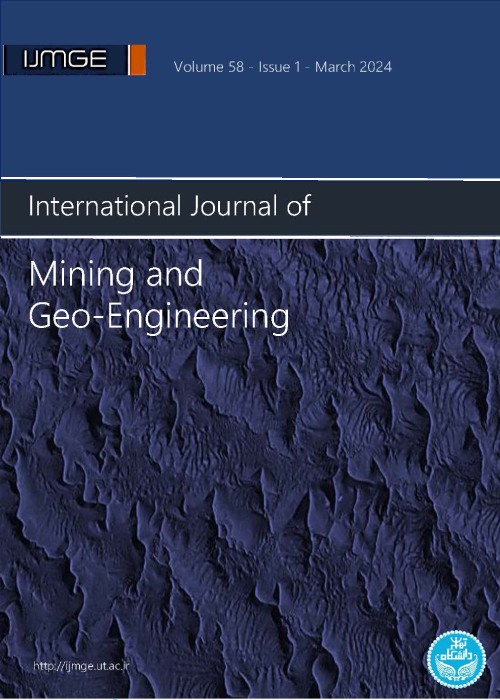3D inverse modeling of electrical resistivity and chargeability data through unstructured meshing, a case study for travertine exploration
Author(s):
Article Type:
Research/Original Article (دارای رتبه معتبر)
Abstract:
Geoelectrical methods are considered common subsurface geophysical imaging tools that provide significant insight into the electrical properties of targets. Considering the three-dimensional nature of subsurface structures, geoelectrical survey data and their 3D inverted models can yield reliable and accurate results. In this research, using an unstructured tetrahedral meshing, three-dimensional forward and inverse models of electrical resistivity and chargeability data were performed for geological structures with travertine layers. The Application of the unstructured mesh for the discretization of subsurface geological units increases the speed and accuracy of the modelling procedure, as well as the flexibility in designing and implementing meshing on tough topographies and the complex-shaped geometry of the target mass. Using an open-source and full-item Python software named ResIPy, the forward and inverse models were calculated and interpreted precisely. According to the geological background of the studied area, to investigate the applicability and efficiency of the 3D geoelectrical modelling method in imaging the subsurface travertine deposits, three synthetic scenarios were modeled according to the geological setting of the studied area. The results of the 3D inversion of the synthetic models indicated the accuracy and validity of this procedure in the exploration of underground travertine deposits. As a real case study, the electrical resistivity and chargeability survey datasets in the Atashkohe travertine mine were inverted in 3D, aimed to inferring schematic geological sections along the three surveyed profiles. The survey was conducted with electrode spacing of 10 and 15 meters, using a combination of dipole-dipole and pole-dipole arrays. Considering the two-dimensional nature of these data and the relatively large distance between the two main profiles, the three-dimensional inversion results may increase the error rate. Therefore, the 2D batch inversion was preferably utilized in order to obtain a more realistic and sensible geological model. According to the geological studies and instrumental analysis of the rock samples, three types of geological structures were identified throughout the study area. Based on the subsurface electrical characteristics inferred along each profile, three geological layers were designed to illustrate the underground structures. The comparison of the inferred geological models and the drilling results along one of the survey profiles demonstrated acceptable compatibility and concordance, indicating the efficiency of the research utilized approach.
Keywords:
Language:
English
Published:
International Journal of Mining & Geo-Engineering, Volume:57 Issue: 2, Spring 2023
Pages:
131 to 140
https://magiran.com/p2588965
دانلود و مطالعه متن این مقاله با یکی از روشهای زیر امکان پذیر است:
اشتراک شخصی
با عضویت و پرداخت آنلاین حق اشتراک یکساله به مبلغ 1,390,000ريال میتوانید 70 عنوان مطلب دانلود کنید!
اشتراک سازمانی
به کتابخانه دانشگاه یا محل کار خود پیشنهاد کنید تا اشتراک سازمانی این پایگاه را برای دسترسی نامحدود همه کاربران به متن مطالب تهیه نمایند!
توجه!
- حق عضویت دریافتی صرف حمایت از نشریات عضو و نگهداری، تکمیل و توسعه مگیران میشود.
- پرداخت حق اشتراک و دانلود مقالات اجازه بازنشر آن در سایر رسانههای چاپی و دیجیتال را به کاربر نمیدهد.
In order to view content subscription is required
Personal subscription
Subscribe magiran.com for 70 € euros via PayPal and download 70 articles during a year.
Organization subscription
Please contact us to subscribe your university or library for unlimited access!


